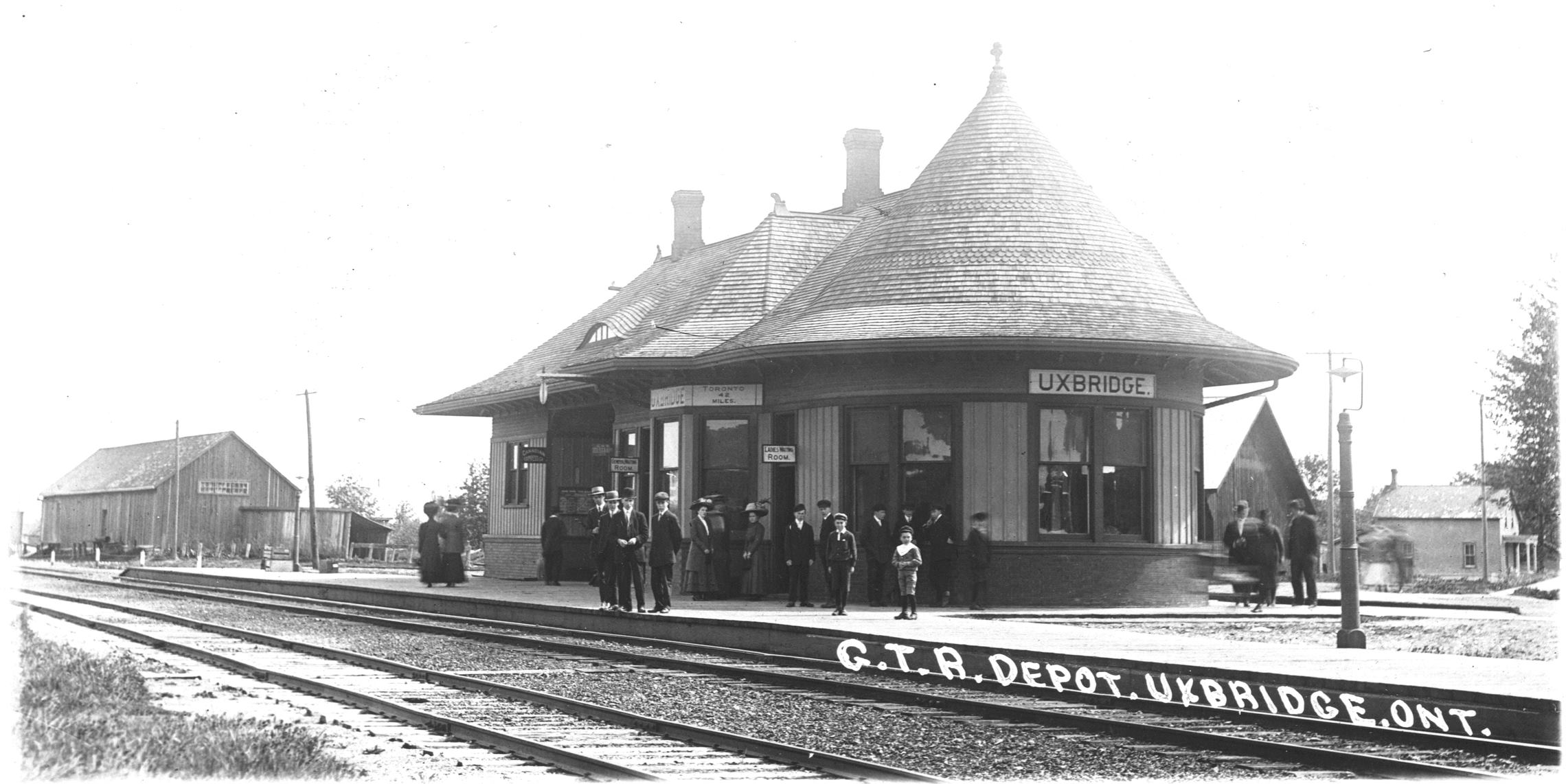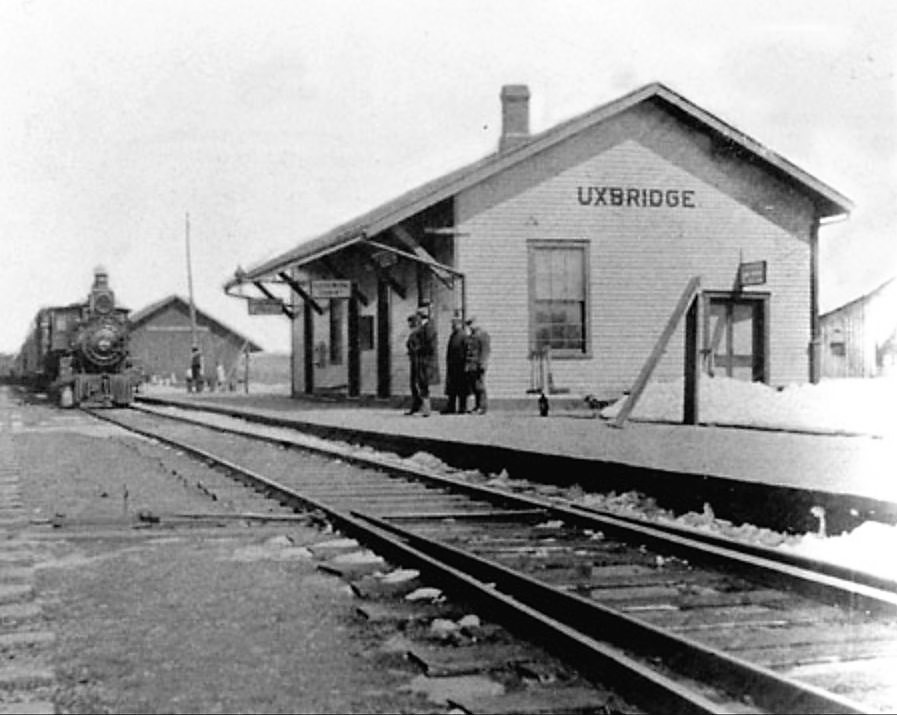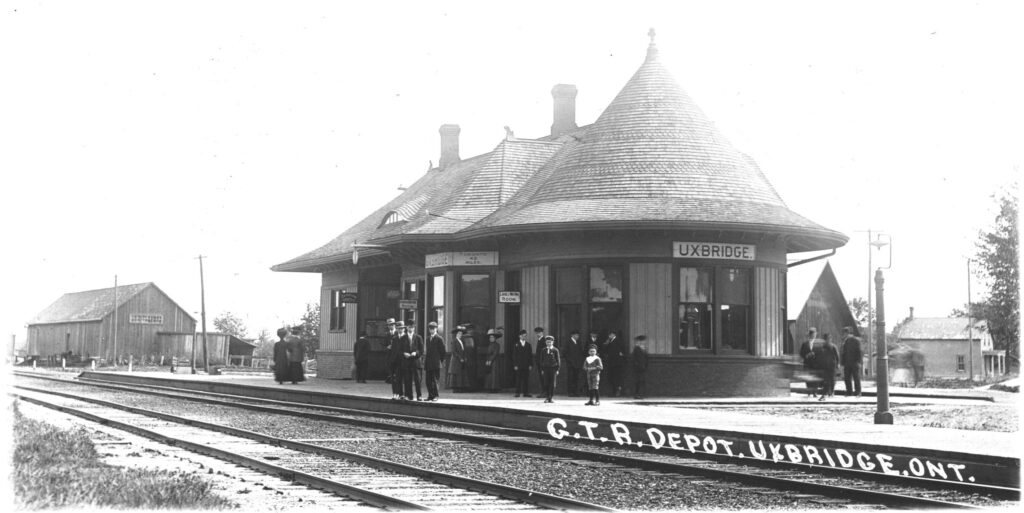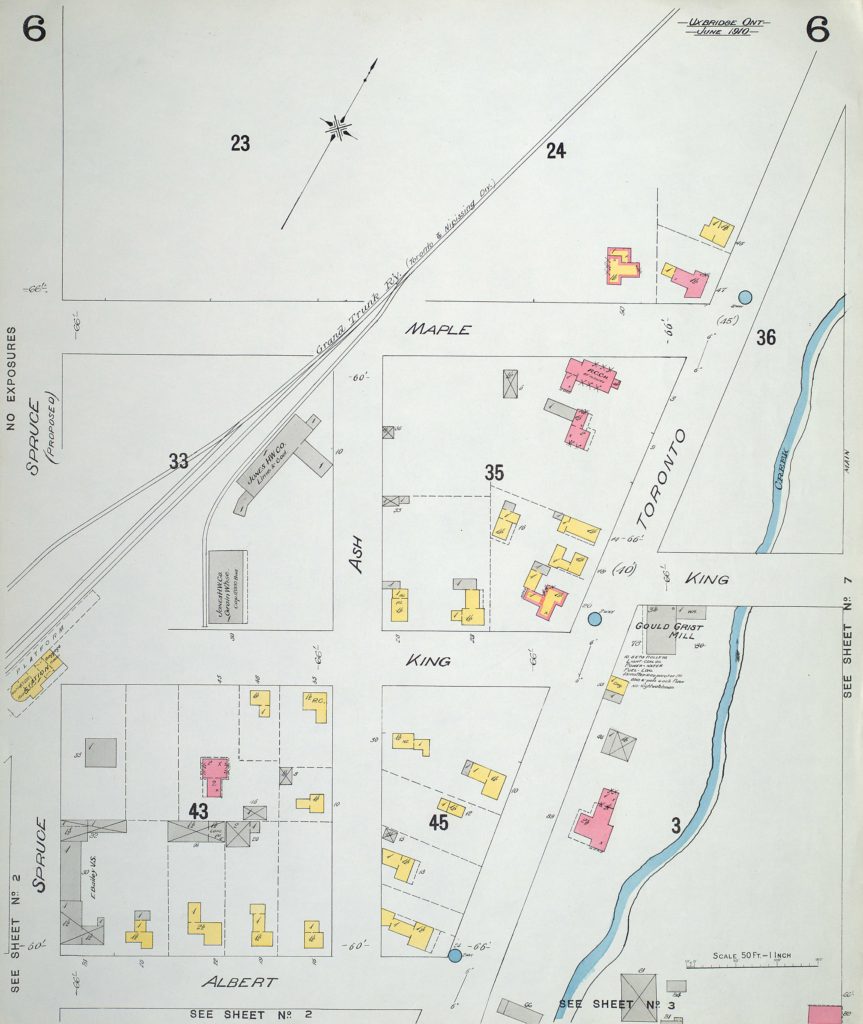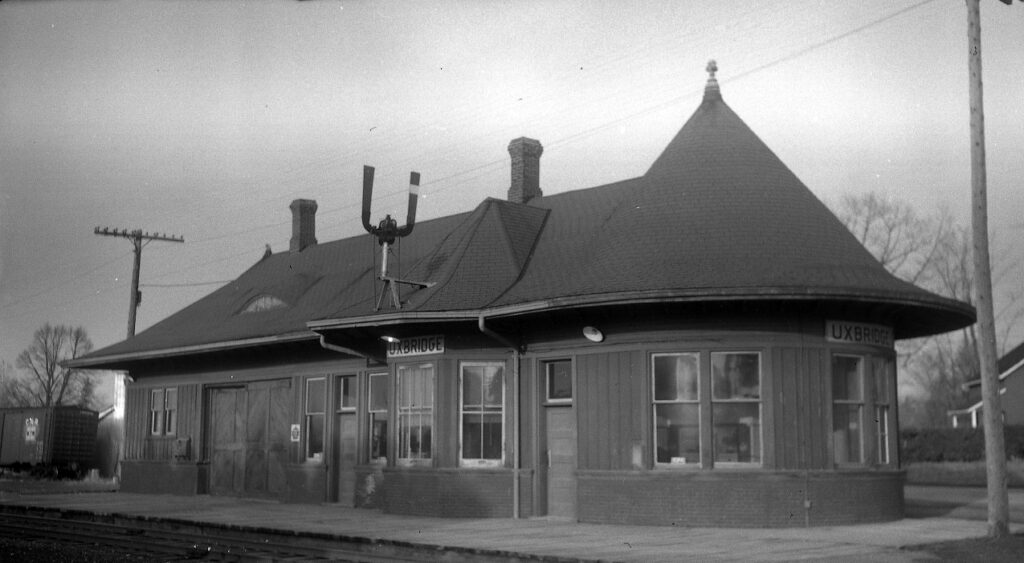Summary
The first train station in Uxbridge was built by the narrow-gauge Toronto & Nipissing Railway in 1870. It was a rectangular wooden structure with a “lean-to” roof to provide shelter for passengers on the platform, following a similar design to other stations built by the Toronto & Nipissing elsewhere around the same time. It contained a waiting room, baggage room, and the station agent’s office. One of the nearby adjacent railway buildings included an engine house to store and service locomotives. The first train arrived from Toronto on July 1st, 1871 while construction north of Uxbridge was still underway. Service beyond Uxbridge commenced in October of the same year.
The widespread adoption of 4′ 8.5” standard gauge by the 1880’s along with competing lines in the area made the Toronto & Nipissing largely unprofitable, and it along with several other branch lines nearby sought to merge under the Midland Railway of Canada. As negotiations were ongoing in 1881, the Midland Railway financed the completion of a third rail to support standard gauge trains along the southern part of the Toronto & Nipissing. It was officially merged into the Midland Railway of Canada on April 1st, 1882. A year later in 1883 the engine house burned to the ground, taking with it the Toronto & Nipissing’s unique double-ended 0-6-6-0 steam engine. Uxbridge was only directly served by the Midland Railway for a short time, as the larger Grand Trunk Railway leased it starting January 1st, 1884. By 1886, Uxbridge Station saw a total of six passenger trains per day.
Train frequency remained relatively consistent into the 20th century, though service had been reduced to five trains per day by 1899. The structure built by the Toronto & Nipissing three decades earlier was no longer adequate for the growing community of Uxbridge, and a new station was built by the Grand Trunk in 1904. It featured more elegant architectural embellishments than its predecessor, following many design choices that were common during the Victorian era. The new station’s most notable feature was a large “witch’s hat” roof above a circular waiting room at the south end of the building. The station agent’s office could be found in the operator’s bay facing the tracks, while the north end of the building held the baggage room. Over the next couple of decades, the Grand Trunk encountered financial difficulties that culminated in its nationalization and subsequent merger into Canadian National in 1923.
The popularization of automobiles during the early 20th century contributed to a decline in passenger ridership, which was intensified by the conversion of several nearby stagecoach routes into the provincial highway system during the 1920’s and 1930’s. By 1958, service to Uxbridge had been reduced to three passenger trains per day. The station was briefly closed to passengers in 1962, but commuter service resumed later the same year. These commuter trains were truncated at Stouffville in 1970, ending passenger service to Uxbridge for good. To prevent its demolition, the station was purchased for one dollar by the Township of Uxbridge from CN in 1988. CN ended their freight movements through Uxbridge in 1992, after which the line north of Uxbridge was torn up. The York-Durham Heritage Railway began offering rail excursions with vintage equipment between Uxbridge and Stouffville in 1996, which they continued to do until operations ceased in January 2024. The section beyond Uxbridge to Lindsay has since been turned into a leg of the Trans-Canada Trail.
Condensed Station Info:
| Location: | Served By: | Current State: | Date Built: | Date Demolished: |
| Railway Street at Spruce Street | T&N (1871 – 1882) MRC (1882 – 1884) GTR (1884 – 1923) CNR (1923 – 1970) | Demolished (First) Preserved (Second) | 1870 (First) 1904 (Second) | 1904 (First) N/A (Second) |


